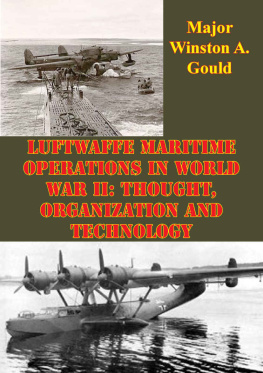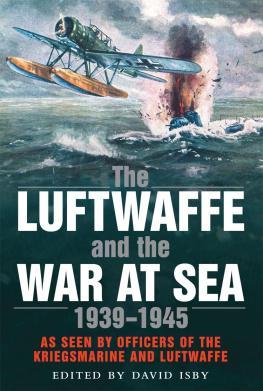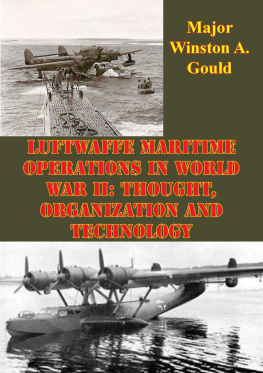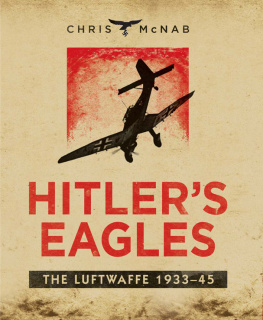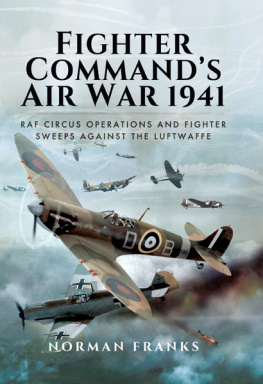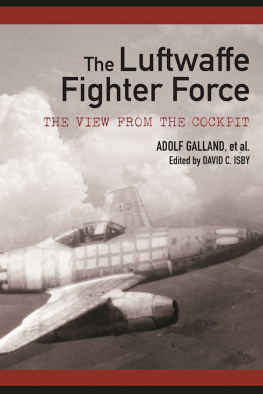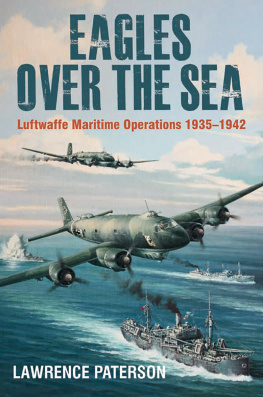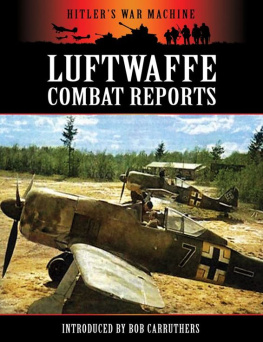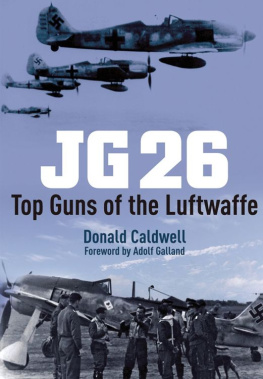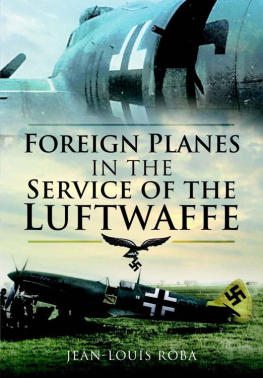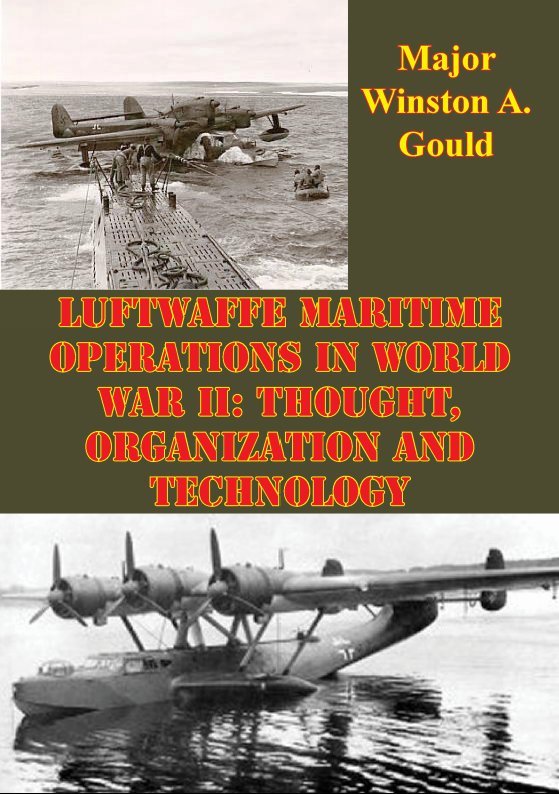

This edition is published by PICKLE PARTNERS PUBLISHINGwww.picklepartnerspublishing.com
To join our mailing list for new titles or for issues with our books picklepublishing@gmail.com
Or on Facebook
Text originally published in 200 5 under the same title.
Pickle Partners Publishing 2014, all rights reserved. No part of this publication may be reproduced, stored in a retrieval system or transmitted by any means, electrical, mechanical or otherwise without the written permission of the copyright holder.
Publishers Note
Although in most cases we have retained the Authors original spelling and grammar to authentically reproduce the work of the Author and the original intent of such material, some additional notes and clarifications have been added for the modern readers benefit.
We have also made every effort to include all maps and illustrations of the original edition the limitations of formatting do not allow of including larger maps, we will upload as many of these maps as possible.
LUFTWAFFE MARITIME OPERATIONS IN WORLD WAR II: THOUGHT, ORGANIZATION AND TECHNOLOGY
by
Winston A. Gould, Major, USAF
TABLE OF CONTENTS
Contents
Preface
The German Luftwaffe maritime forces were colloquially known as Der See Adlers, or The Sea Eagles. This particular breed of the Luftwaffe developed its own doctrine and tactics to accomplish the many unique roles it was assigned. Units were created to meet unique requirements, often in response to a pressing need and learning from expensive and painful lessons. German ingenuity and creativity once again came to the forefront in the adaptation of current technology and the development of special weapons to support maritime operations.
The German Luftwaffe of World War II is well known for its role in supporting the Blitzkrieg tactics of the Wehrmacht Heer, or German Army. Another important role was the use of the Luftwaffe in maritime operations in support of the Kriegsmarine. This research paper will examine the role of the Luftwaffe in maritime operations, specifically in the Atlantic area of operations. First, this paper will examine the thought and doctrine of the Luftwaffe in maritime operations. Secondly, this paper will examine the organization of the Luftwaffe, specifically the units employed in maritime operations. Finally, this paper will examine the technology employed by the Luftwaffe in maritime operations.
I would like to acknowledge the guidance received from my research advisor, Dr Richard R. Muller. His expertise and vast knowledge of the Luftwaffe in World War II assisted in zeroing in on the subject. I would also like to acknowledge the wonderful assistance of Miss Terry Kiss of the Air University Library. Her tireless efforts searching for reference material were invaluable. Finally, I would like to thank the Toni Petito of the Air Force Historical Research Agency. The AFHRAs vast repository of translated German documents provided immeasurable information for this paper.
Abstract
The development of airpower can be traced to three key elements: thought, organization and technology. The Luftwaffe of World War II is no different. This paper will examine the Luftwaffes thought, organization and technology as it pertains to maritime operations, or as the modern United States Air Force (USAF) calls it, Countersea Operations. These maritime operations will include direct support of the Kriegsmarine and independent Luftwaffe operations against the Allies. Luftwaffe thought will show that doctrinally the Luftwaffe was not as prepared for the maritime role its leaders thrust upon it, but flexibility and the application of the tenets of airpower provided the basis for adaptation. Also included will be an examination of the fierce rivalry between the Luftwaffe and Kreigsmarine senior leadership and how this interfered with the conduct of countersea operations. Luftwaffe organization during World War II provided a more than adequate basis for conducting the countersea campaign. The adaptability of the operational and support structure allowed the Luftwaffe to accomplish a variety of missions, even as their aircraft and weapons were proving deficient. Finally, the Luftwaffe was at the forefront of innovation in the field of aviation technology, including airframe and weapon development. Once again, interference by senior leadership and equipment teething problems combined with increasing Allied attacks cost the Luftwaffe precious time.
Introduction
Throughout the history and development of airpower, three key themes emerge. These areas are thought, organization and technology. Thought, many times born as an idea or concept to do things better, develops into an air services doctrine. This doctrine is often responsible for the development of organization and technology, but not necessarily so. There are many examples in the past 100 years of airpower where the organization of an air arm or a rapid technological development changed the way of war in the air. The Luftwaffe of World War II was one such example.
The Luftwaffe of 1939 was a culmination of many years of secretive pre-war development in all three areas: thought, organization and doctrine. Although banned by treaty from having an air service, German foresight placed key airmen on the staffs of the post-Great War German Army. The lessons of World War I were still fresh on the minds of Germanys airmen, as well as the hard lessons learned from active service in the Spanish Civil War. It was the combination of these two events that shaped the World War II Luftwaffe. What the world saw in the 1939 Luftwaffe was a service dedicated to a major ground war, with very little interest in the war at sea. The Chief of the Air Staff, Generaloberst Hans Jeschonnek, believed that the Luftwaffe, in the form of twin-engined medium bombers and single-engined dive bombers, could win the war on the ground along with the German Army and its tanks. The German High Command, especially Adolf Hitler and Reichsmarschall Hermann Goering, among others, also believed in this course of action to win the war in Europe and bring Great Britain to the negotiating table. Truth be known, the thought of a prolonged maritime campaign probably scared Hitler and Goering, based on the effects of the blockade of Germany in World War I.
This paper will first examine Luftwaffe thought and doctrine. This is critical to understanding the lack of preparedness on the Luftwaffes part for maritime operations. As General Curtis Lemay said: At the very heart of warfare lies doctrineIt is the building material of strategy. It is fundamental in sound judgment. German air doctrine was not prepared for the countersea role its leaders thrust upon it. It is here that the German leadership turned a house of brick into a house of straw.
Secondly, this paper will look at the Luftwaffes organizational structure. Unlike their doctrine, the Luftwaffes organizational structure was more than adequate for the task and provided an enabler for the tactical and operational execution of the war, whether accomplishing counterair, counterland or countersea missions. Strategically, operationally and tactically, Luftwaffe organization was sound, even adapting organizations on-the-fly to meet specific theater demands. However, it was the execution, or operational use, of this structure and the inflexibility of leadership which proved to be the Achilles Heel of the Luftwaffe.
Finally, after looking at Luftwaffe thought and organization, this paper will discuss German weapons development for the countersea role. The importance of the airplane and how it supported German aspirations in the maritime environment cannot be overstated. Included will be a brief overview of the use of land and sea-based aircraft as well as the still-borne aircraft carrier program. Also, German technical prowess at weapons development and the innovative use of guided bombs and missiles will be discussed.
Next page
